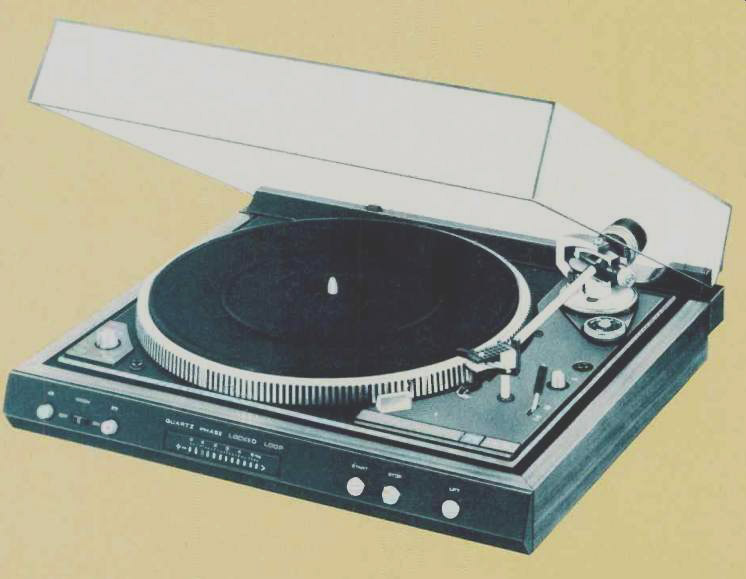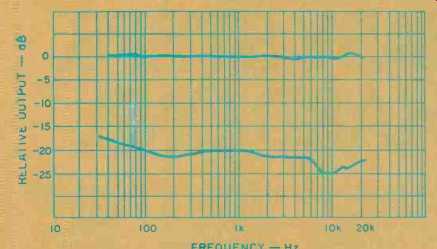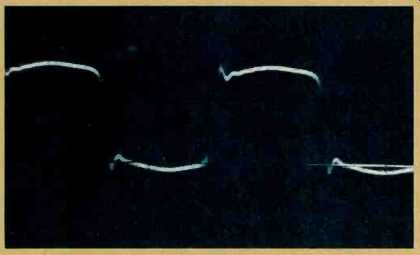
Manufacturer's Specifications:
Type: Two speed.
Motor Type: Quartz-reference, phase-locked loop, direct drive.
Wow and Flutter: ±0.015 percent W rms.
Rumble: -78 dB (DIN 45-539).
Speed Control: ±5.5 percent.
Optional Cartridge: Ortofon ULM 60E.
Separation: 30 to 35 dB.
Stylus: Bi-Rad.
Output: 0.7 mV/cm/S at 1 kHz.
Tracking Force: 0.5 to 1.25 grams.
Dimensions: 16 1/2 in. (41.25 cm) W x 14 1/2 in. (36.25 cm) D x 51/4 in. (13.125 cm) H.
Price: $559.95; $699.95 with cartridge.
The CS 731Q is Dual's new top model turntable and, while it bears a certain family resemblance to older units like the 721, there are some important differences. The arm and cartridge together have an exceptionably low mass of 8 grams.
The tube is smaller in diameter, and though the counterweight looks familiar, a closer examination shows that it has a calibrated ring. You might have thought that this sets the stylus force, but it doesn't--there is a separate dial for this function located near the arm pivots. The ring tunes a mechanical filter to reduce the arm-cartridge resonance, and the result is a smaller "double-hump" resonance familiar to speaker engineers. The object is to improve trackability with warped records and reduce distortion. The arm itself is 8 3/4 inches long, terminating in a low-mass headshell on which there is an Ortofon ULM 60E cartridge. ULM--as you have probably guessed--means "Ultra Low Mass," and the cartridge weighs only 2.5 grams, including the mounting bracket and hardware! It is one of the series of three magnetic cartridges designed by Ortofon to Dual spec with a tip mass of only 0.35 milligrams. For those who prefer a conventional (high mass) cartridge, a spare headshell is also supplied.
An anti-skating dial is positioned near the arm base and just in front of it is a manual/repeat switch and a cue lever. A green strobe light is near the platter, while over on the left hand side is the two-position speed switch. The rest of the controls are mounted on the angled front panel where they are accessible when the dust cover is closed. Two pitch controls are on the left, together with a switch for unlocking the quartz-controlled PLL circuit. Speed deviation is displayed on a horizontal array of LEDs: When the speed is locked, a green LED lights up at 0; variations from +5 to-5 percent are indicated by red LEDs. On the right-hand side of the front panel are three push buttons for Stop, Start, and Lift (yes, the cue lift control is duplicated). Additionally, the cue control de scant speed is adjustable by means of a ring at the arm base.
The servo-controlled motor does not rotate at 400 or 1800 rpm but turns at the actual platter speed-the center spindle is the top of the motor shaft. An integral generator provides the correction pulses for the quartz control circuit which, by the way, still operates when the speed is changed from the pre-set standard. Dual also stresses the fact that the strobe light is connected to the PLL circuit, not to the power supply.
The platter is dynamically balanced and there are deep-cut strobe markings around the edge, while the complete assembly--motor, motor board, and arm--is mounted on springs attached to the base. This is covered in a black vinyl material that makes a nice contrast to the elegant, anodized front panel.
Laboratory and Use Tests
The first exercise was to check the position of the counter balance tuning ring, which is quite simple as there is a chart printed in the instruction manual. Next, the resonance was measured and the two points came out at 8 and 12 Hz with a rise of about 3 dB. Tracking error was less than 0.5 degrees per inch, and calibration of the tracking force dial was within 5 percent above 0.75 gram. Both lateral and vertical bearing friction was too low to measure accurately (the specifications quote 7 milligrams). Wow and flutter measured 0.035 per cent, using the DIN 45-507 standard, and rumble was a low-63 dB (ARLL weighting). The speed control gave a variation of ±6 percent. So good marks for performance here.

Fig. 1--Frequency response and separation.
Figure 1 shows the frequency response of the ULM 60E cartridge, and I was interested to see that maximum separation is at the higher frequencies instead of the usual 200 Hz to 5 kHz band. The square wave response (Fig. 2) showed a single moderate overshoot followed by a smooth, well-damped response typical of a wide-range cartridge having a low Q resonance outside the audio range. The optimum tracking force was a hair over 1 gram with the anti-skating dial set to a similar figure. All bands of the big drum section on the Shure-ERA Ill test record were negotiated with ease, while there was just a trace of "sandpaper" on band 5 of the sibilance group. Maximum tracking velocity was 27 cm/S (10.8 kHz pulsed) and 24 cm/S at mid-frequencies (400 + 4 kHz). IM distortion for 1 kHz and 1.5 kHz (4:1) reached 2 percent at 20 cm/S. Again, good marks.
Dual recommends a total load capacity of 400 pF, and this was used for the measurements. Switching to. 200 pF--a more common value--caused a slight dip in the midrange followed by a 2-dB rise at 18 kHz.

Fig. 2--Square wave response, Ortofon ULM 60E cartridge.
Tested with a variety 01 records, the sound quality was as neutral as most top-flight cartridges and the tracking ability was better than average. As mentioned earlier, a spare head-shell is supplied so you can use a different cartridge--but don't forget the capacitive load requirement. (The capacity of the cables is just under 200 pF.) At the end of a record, the arm swings back very quickly, total cycling time is less than five seconds in the Repeat mode. The cue lift device was almost totally free from back lash, and the descent time could be varied from two to about four seconds. As far as acoustic feedback is concerned, the 731Q is better than most all current models, and you can knock the base quite hard before mistracking occurs. But don't be tempted to reduce tracking force much below 1 gram: Although the cartridge will happily play many records at half a gram, as with any tonearm, a stylus that is swinging about can cause as much damage as one with too much pressure!
-George W. Tillett
Evaluation Records
The following test records were used for the listening evaluation of the Dual CS 731Q turntable with the Ortofon ULM 60E cartridge: Shure TTR-103, TTR-9, TTR-10, and TTR-15; CBS STR-100, STR-110, BTR-150, and STR-120; and Denon XG-7001. Additional records included:
Stereo
Hammond Castle Pipe Organ (Vol. 1), D. Marshall--Decibel DB 1000.
Direct to Disc
Sonic Fireworks (Vol. 1), Morris, Atlanta Brass Ensemble--Crystal Clear Re cords CCS-7010.
Sonic Fireworks (Vol. 2), Morris, Atlanta Brass Ensemble--Crystal Clear Records CCS-7011.
Swing Sessions, Kitamura--RCA RDCE-10.
Percussion in Colors, Yoshihara--RCA RDCE-9, The Great Organ of the Methuen Memorial Hall, Murray-Telarc DD-2.
Digital
Tchaikovsky: Symphony No. 4, Maazel, Cleveland Orchestra--Eclair 10047.
Malcolm Frager Plays Chopin--Telarc DC-10040.
Hoist: Suites 1 and 2, Handel. Music for the Royal Fireworks, Fennell, Cleveland Symphonic Wind!--Telarc 5038.
Encoded dbx
Copland: Billy the Kid, Johanos, Dallas Symphony-Turnabout--dbx SS-3007.
Mark Levinson Presents--dbx RTS-1.
Dbx encoded discs are available through audiophile dealer, or from dbx, Chapel St., Newton, Mass.
Decibel Records' address is Box 691. Lexington, Mass. 02173.
Denon Records are distributed by American Audioport, Inc. 407 is: Providence Rd., Columbia, Mo. 65201.
(Audio magazine, May 1980)
Also see:
Dual Model 1249 Automatic Turntable (Equipment Profile, Feb. 1977)
Dual CS 5000 Turntable and Ortofon X3-MC Cartridge (Nov. 1988)
= = = =